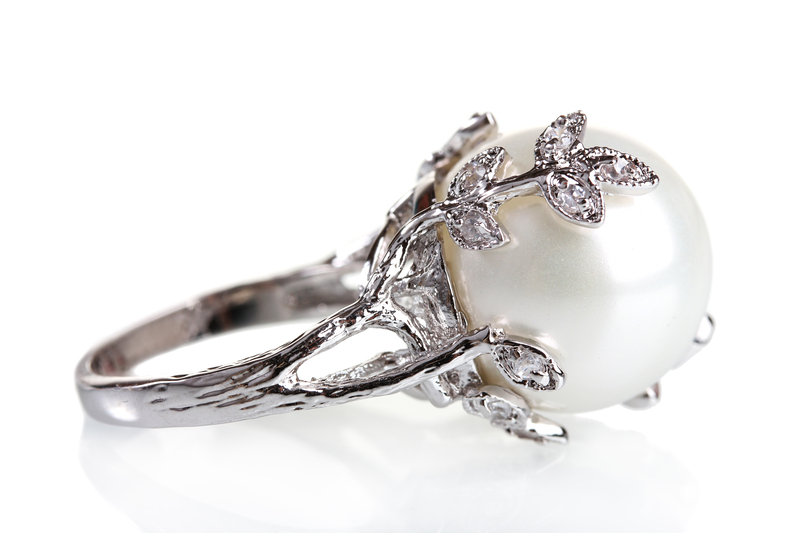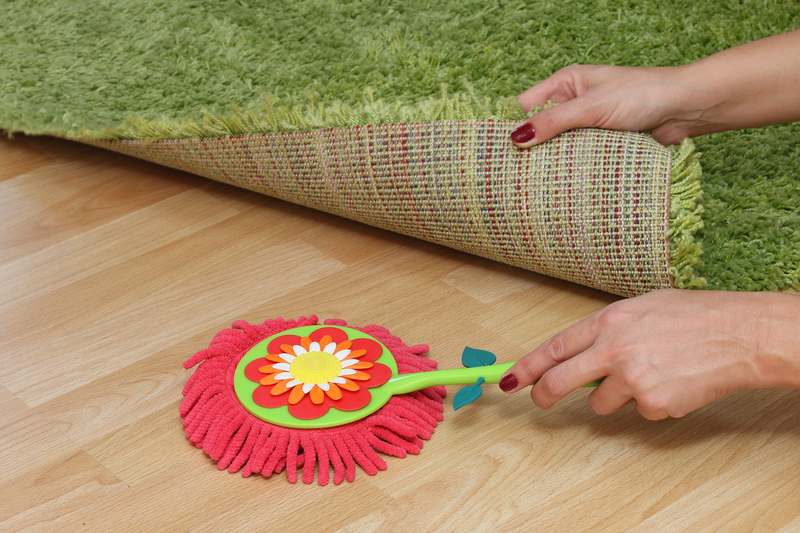No More Grease: Step-by-Step Guide to Pristine Enamel Oven Trays
Posted on 26/06/2025
No More Grease: Step-by-Step Guide to Pristine Enamel Oven Trays
Enamel oven trays are essentials in every kitchen, known for their durability, heat resistance, and non-stick qualities. However, over time, grease, burnt-on food, and stubborn stains can tarnish their shine, leaving you wondering how to restore them to their former glory. If you're tired of persistent grime and want to keep your enamel trays spotless, you've landed on the right page. In this guide, we'll explore the best techniques and tips for cleaning enamel baking trays, ensuring they stay pristine and last for years.

Why Cleaning Your Enamel Oven Trays Matters
Before diving into the practical steps, it's crucial to understand why regular cleaning is essential for enamel oven trays:
- Prolongs Lifespan: Removing built-up grease and residue helps prevent permanent stains and damage, significantly extending the life of your trays.
- Enhances Food Flavor: Old grease and burnt food can impart unwanted flavors and odors to new dishes, affecting your recipes' taste.
- Improved Kitchen Hygiene: Clean trays minimize the risk of bacterial growth and cross-contamination, ensuring your family's safety.
- Effortless Cooking and Cleaning: Non-stick properties of enamel trays work best when kept clean, reducing the time you'll spend scrubbing after use.
Understanding Enamel Oven Trays
Enamel oven trays are typically made from metal, coated with a layer of enamel (a tough, glass-like finish). This coating makes them durable, resistant to rust, and easier to clean than many alternatives. However, the enamel surface can chip or stain if not cared for correctly. Thus, maintaining their pristine enamel surface is crucial for their performance and longevity.
What Causes Stains and Grease Buildup on Enamel Trays?
Repeated baking and roasting can result in:
- Grease Splatter: Oils drip and splatter, especially when roasting fatty foods, leading to a sticky buildup.
- Baked-On Food: Overcooked or spilled food can bond to the enamel, leaving brown stains.
- Burn Marks: Excessive heat or sugary marinades can cause stubborn black marks.
Understanding these common culprits allows us to choose the right cleaning method for restoring your enamel oven trays to a like-new condition.
Preparation: What You Need for Cleaning Enamel Oven Trays
Gathering the right tools and ingredients is step one in the battle against grease and stains. Here's what you'll need for a deep clean:
- Baking Soda
- White Vinegar
- Mild Dish Soap
- Hot Water
- Non-Abrasive Sponge or Cloth
- Soft-Bristled Brush (for tough stains)
- Plastic or Wooden Scraper (never metal!)
- Rubber Gloves (optional, for sensitive skin)
Tip: Avoid steel wool, harsh scourers, or strong chemical cleaners as they can damage the enamel coating and shorten your tray's lifespan.
Step-by-Step: How to Clean Enamel Oven Trays Effectively
Step 1: Let the Tray Cool Down
Never try to clean an oven tray while it's still hot. Allow it to cool completely to prevent burns and cracks in the enamel due to rapid temperature changes.
Step 2: Remove Loose Debris
Gently scrape away any loose food pieces using a plastic or wooden scraper. Avoid metal tools that can scratch or chip the enamel.
Step 3: Soak the Tray
- Fill your sink or a large basin with hot water and a few drops of mild dish soap.
- Submerge the baking tray for 15-30 minutes. This helps loosen grease and stuck-on food, making it easier to clean.
If the tray is too large for your sink, lay it flat in your bathtub or use a wet sponge to keep it moist during soaking.
Step 4: Prepare a Cleaning Paste
Baking soda is a gentle abrasive and deodorizer--ideal for enamel surfaces. Mix:
- 3 tablespoons of baking soda
- 2 tablespoons of water
Combine these to form a thick paste.
Step 5: Scrub the Tray
- After soaking, drain the water and apply the baking soda paste to stained or greasy areas.
- Let the paste sit for 10-15 minutes to break down tough residues.
- Use a non-abrasive sponge or soft brush to gently scrub the surface in circular motions. Pay extra attention to corners and edges, where grease hides.
Step 6: Stubborn Stains? Add Vinegar!
For burnt-on grease or persistent stains:
- Spray some white vinegar over the baking soda paste. It will fizz, helping to lift off the grime.
- Scrub again gently. The combination of baking soda and vinegar is powerful yet safe for enamel.
For extra-tough spots, repeat the process or let the mixture sit overnight.
Step 7: Rinse and Dry Thoroughly
- Rinse the tray with warm water to remove all cleaning residues.
- Dry immediately with a soft, clean cloth to prevent water spots.
Quick Maintenance Methods for Daily Cleaning
Between deep cleans, follow these steps to keep your enamel oven baking trays gleaming:
- After each use, wipe off any residual grease with paper towels while the tray is still warm (not hot!).
- Use mild dish soap and a sponge for a quick wash.
- Dry thoroughly to avoid water spots or streaks.
- Avoid stacking heavy items on top of enamel trays, as chipping can occur.
How to Remove Burnt-On Grease and Stains from Enamel Trays
For Intensely Stained Enamel Oven Trays
If regular soaking and scrubbing don't cut it, try these advanced methods:
- Baking Soda & Hydrogen Peroxide Method: Mix baking soda and a small amount of hydrogen peroxide to form a paste, apply to stains, let sit for an hour, then scrub and rinse.
- Oven Cleaner (with caution): Use only enamel-safe, non-abrasive oven cleaners. Follow product instructions strictly and rinse thoroughly.
- Lemon Juice: The acidity helps break down grease naturally. Sprinkle salt, then rub with a lemon half and rinse.
- Commercial Enamel Cleaner: Choose products labelled for enamel surfaces and avoid bleach or anything too harsh.
Caution: Always do a spot test with any chemical before treating the entire tray to avoid discoloration or damage.
What to Avoid When Cleaning Enamel Oven Trays
- No metal scourers: These can chip and scratch the protective enamel layer.
- No strong bleaches or ammonia: Harsh chemicals may dull or etch the enamel, decreasing its non-stick properties.
- No sudden temperature changes: Don't put a hot tray in cold water or vice versa. This can cause enamel to crack.
- No dishwashers (unless manufacturer-approved): Some enamel trays are dishwasher-safe, but high temperatures and aggressive detergents can reduce their lifespan.
Treat your tray with care, and it will reward you with years of reliable use and easy cleaning.
Top Tips for Keeping Enamel Oven Trays Spotless
- Always Clean After Use: The sooner you tackle spills, the easier they are to remove.
- Use Baking Paper or Foil: Lining trays during cooking minimizes contact with grime.
- Store Properly: Keep trays dry and stacked carefully to avoid chips.
- Regular Deep Cleaning: Set a reminder for a monthly thorough clean if you use your enamel trays often.
- Handle With Care: Lift generous portions rather than scraping stubbornly with utensils.
FAQs: Getting Your Enamel Oven Trays Grease-Free & Pristine
Can I use dishwasher tablets to clean enamel trays?
Answer: Dishwasher tablets can be dissolved in hot water to soak enamel trays, but always rinse thoroughly and check the manufacturer's recommendations regarding dishwashing detergents.
How do I get rid of rust spots on my enamel tray?
Answer: Rust is rare if enamel is intact. If you notice rust, the tray may have chips exposing metal. Avoid using the tray until it's repaired (special enamel repair kits exist), or consider a replacement.
Are all enamel trays dishwasher safe?
Answer: Not all are. Check for a dishwasher-safe symbol or user manual before placing enamel trays in the dishwasher. Hand washing is safest for longevity.
Should I season enamel trays like cast iron?
Answer: No need to season enamel trays. Just ensure they are clean, dry, and avoid harsh cleaning methods that might damage the coating.
My tray is stained and discolored even after cleaning. What now?
Answer: Some discoloration may be permanent due to prolonged high-heat exposure or acidic foods. As long as the enamel remains intact, your tray is safe to use. For aesthetics, you may opt to use these for roasting and reserve newer trays for baking.

Eco-Friendly Cleaning Alternatives for Enamel Oven Trays
- Lemon and Salt: Scrub with half a lemon dipped in salt. This natural combo dissolves grease and neutralizes odors.
- Baking Soda/Vinegar: Already mentioned, this method is eco-friendly and avoids commercial chemicals.
- Natural Soap: Plant-based dish soaps are gentle and effective for daily cleaning needs.
Sustainable cleaning keeps your kitchen green and your trays dazzling!
The Bottom Line: Maintaining Pristine Enamel Oven Trays
With consistent care using the proper cleaning techniques, your enamel oven trays can remain grease-free, vibrant, and safe for years. Prioritize gentle, non-abrasive methods, avoid harsh chemicals, and tackle stains quickly. With these habits in place, every meal you bake or roast comes with the confidence of a spotless, pristine enamel tray beneath it.
For more cleaning tips and kitchen hacks, bookmark this page and keep your kitchen sparkling!
```




